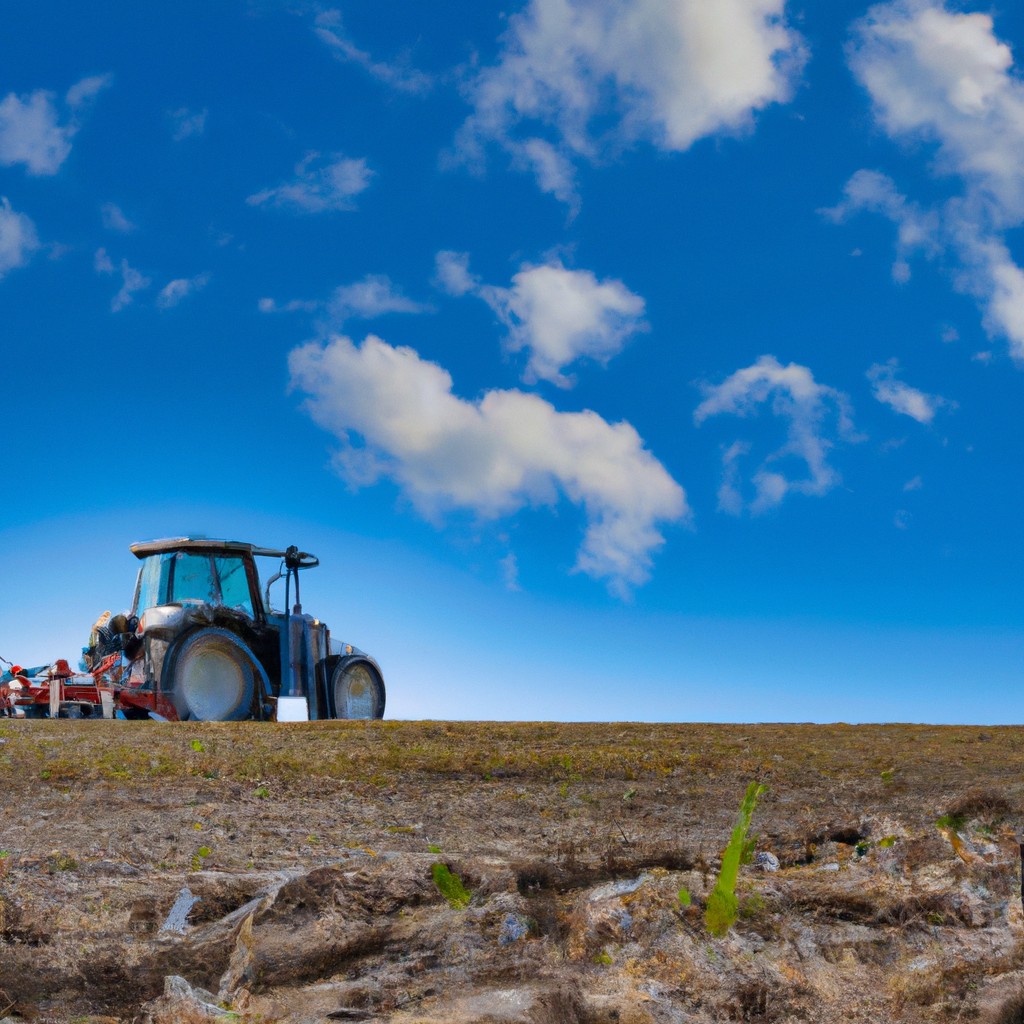Discover how agricultural technology is revolutionizing the way we farm, from seed to harvest, increasing efficiency and sustainability in the process.
Look Inside:
GIS-Based Agriculture

Geographic Information Systems (GIS) technology has revolutionized how farmers analyze soil data, manage land resources, and make informed decisions for their crops. By overlaying spatial data with real-world coordinates, farmers can visualize patterns and assess land suitability with unprecedented precision.
The integration of GIS allows for the identification of specific zones within a farm that require different management practices, optimizing input usage and minimizing waste. Satellite imagery and field data combine to create a detailed picture of the land’s performance, a process known as “site-specific crop management.”
Furthermore, GIS supports the monitoring of crop health through vegetation indices, like NDVI, which measure plant greenness and vigor. This capability helps in detecting issues such as nutrient deficiencies, water stress, and pest infestations before they become widespread.
Utilizing GIS tools also aids in logistical planning, defining the most efficient routes for machinery, and identifying the best field sections for planting or harvesting. This ensures that operations are streamlined, saving time and reducing fuel consumption.
By harnessing the power of GIS, sustainable practices can be targeted more effectively. For instance, areas prone to erosion can be flagged for conservation tillage, while regions with water accumulation may be allocated for water-conserving practices or wetland preservation.
In summary, GIS-based agriculture equips farmers with valuable insights into their land, enabling smarter, more sustainable farming decisions that promote both productivity and environmental stewardship.
Livestock Farming Technology
Advancements in livestock farming technology have markedly changed the way farmers manage and care for their animals. Modern tools and devices help optimize animal welfare while improving production efficiency.
Electronic identification tags, for instance, enable easy tracking of each animal’s health records and movement, facilitating timely interventions and reducing disease spread. Automated feeders and milkers, which can be programmed for individual dietary needs and milking schedules, ensure each animal receives personalized care, supporting better health and productivity.
Data analytics is another crucial aspect, where insights drawn from collected data aid in decision-making. Analyzing feeding patterns, behavior, and growth rates helps fine-tune farming operations for maximal yield with lower resource inputs.
Additionally, livestock monitoring apps integrate with these technologies, offering farmers real-time updates on their herds, thus enhancing responsiveness to animals’ needs and improving overall farm management. These technologies collectively contribute to sustainable livestock farming by reducing waste, optimizing resource use, and ensuring high standards of animal welfare.
Precision Agriculture Technology
Precision agriculture technology harnesses data to inform decision-making and optimize farming practices for better yield and resource conservation. By using sensors, GPS, and mapping tools, farmers acquire detailed insights into their fields, enabling them to apply the right interventions at the right locations and times.
Variable Rate Technology (VRT) adjusts the input of seeds, fertilizers, and water to the needs of different field sections, enhancing efficiency and reducing waste. GPS soil sampling gathers precise data on soil properties, which guides targeted soil management strategies.
Drones and satellites offer aerial perspectives, collecting information on crop health and growth patterns. This imagery helps detect pest infestations, diseases, and water stress, which can be addressed promptly to mitigate losses.
Incorporating weather station data aids in informed decision-making regarding planting and harvesting times, as well as irrigation scheduling. The integration of real-time data into farm management systems allows for more accurate and timely applications, steering farming towards maximum profitability with minimal environmental impact.
Agriculture and Artificial Intelligence
Artificial Intelligence (AI) in agriculture is revolutionizing how we grow food and manage farms. By harnessing AI capabilities, farmers can analyze data from various sources, including satellites, sensors, and drones. This data analysis helps in making informed decisions, from predicting weather patterns to identifying pests and diseases.
Machine learning algorithms enable the detection of abnormalities in crops early on, facilitating prompt intervention to mitigate potential issues. Predictive analytics can forecast crop yields, allowing for better planning and distribution of resources.
AI-driven robots are becoming increasingly commonplace, automating tasks like weeding, harvesting, and pruning. These robots can work around the clock, increasing productivity and reducing the need for manual labor.
Another aspect where AI shines is in livestock management. It monitors animal health and behavior, ensuring any signs of distress are promptly addressed. AI applications here can lead to happier, healthier livestock.
Overall, AI’s integration into agriculture lays the groundwork for smarter, more efficient farming practices that can lead to higher yields, reduced waste, and a more sustainable future for farming.
Water Management Technology
Effective water management is key to sustainable farming. Technologies like drip irrigation deliver water directly to plant roots, reducing wastage and ensuring that crops receive the precise amount necessary for optimal growth. This method conserves water, an increasingly scarce resource, and can result in substantial savings for farmers.
Soil moisture sensors offer real-time data, informing farmers when plants require water. This prevents over- or under-watering, both of which can be detrimental to crop health and yield. By responding promptly to plants’ needs, resources are used more efficiently, and the environmental impact of farming is minimized.
Rainwater harvesting systems collect and store rainwater for agricultural use. This not only provides an additional water source but also diminishes runoff, which can lead to soil erosion and nutrient loss. Implementing such systems can improve water security and reduce dependency on local water supplies.
The integration of smart irrigation systems, which leverage weather forecasts and historical data, allows for dynamic watering schedules. These systems can adjust to anticipate rain or heightened evaporation rates, ensuring that irrigation is both timely and conservative.
These technologies together help in supporting sustainable agricultural practices. They play a crucial role in conserving water, reducing costs, and promoting the health and yield of crops.




